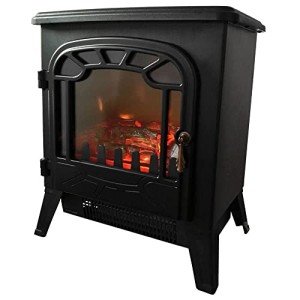The Timeless Appeal of Traditional Fireplaces in the UK
Traditional fireplaces have actually long been integral to homes across the United Kingdom, transcending simple energy to end up being focal points of heat, convenience, and visual appeal. This post explores the enduring appeal of traditional fireplaces, exploring their history, style variations, setup considerations, and their modern-day relevance.
Historic Significance of Fireplaces
The fireplace has actually played a central function in British homes because medieval times. Originally, they were important for heating and cooking. Over the centuries, with the advent of main heating and technological improvements, fireplaces have changed into signs of heritage and style.
Secret Historical Milestones
| Date | Milestone | Description |
|---|---|---|
| 12th Century | Introduction of Chimneys | Allowed indoor fireplaces to be typical, improved ventilation. |
| 16th Century | The Renaissance influence | Fireplaces became more ornamental, showing the era's designs. |
| 18th Century | The Georgian Era | Established detailed mantels made from wood and stone. |
| 19th Century | Victorian Era | Introduction of cast-iron and tiled fireplaces. |
| 20th Century | Decline and Modern Design | Shift towards gas and electric, with some revival of traditional styles. |
Kinds Of Traditional Fireplaces
While contemporary designs concentrate on minimalism, traditional fireplaces often exhibit elaborate craftsmanship and historical significance. Here are some popular kinds of traditional fireplaces frequently found in the UK:
Open Hearth Fireplaces
- Defined by a large opening and usually constructed from brick or stone.
- Provides a cozy atmosphere and the sound of crackling flames.
- Requires a proper flue to reroute smoke outdoors.
Wood-Burning Stoves
- Enclosed systems that burn wood for heat, frequently including a glass door.
- More efficient than open hearths, supplying better heat retention.
- Readily available in numerous styles, from rustic to contemporary.
Cast Iron Fireplaces
- Popular in the Victorian era, known for elaborate styles.
- Durable and popular for exceptional heat conduction.
- Typically function intricate patterns or motifs, boosting visual appeal.
Tiled Fireplaces
- Often decorated with decorative tiles, these fireplaces display creative flair.
- Common in the 19th century, tiles can feature scenes or floral styles.
- Usually coupled with wood or cast iron elements.
Marble Fireplaces
- Distinguished for their elegance, these fireplaces are typically tailor-made.
- Marble offers an elegant surface and matches various interior styles.
- They need careful installation due to their weight.
Table: Comparison of Traditional Fireplace Types
| Fireplace Type | Heat Efficiency | Aesthetic Appeal | Upkeep Needs | Fuel Type |
|---|---|---|---|---|
| Open Hearth | Low | High | High (chimney cleansing) | Wood |
| Wood-Burning Stove | High | Moderate | Moderate (wood supply) | Wood |
| Cast Iron | High | High | Low | Wood/Gas |
| Tiled | Moderate | Extremely High | Low (if non-usable) | N/A |
| Marble | Moderate | Very High | Moderate | N/A |
Considerations for Installing a Traditional Fireplace
Setting up a traditional fireplace can boost a home's character however includes particular factors to consider. Here are some points homeowners must remember:
- Building Regulations: Always inspect regional building regulations and regulations. Setup may need authorization, particularly if structural adjustments are needed.
- Material Selection: Choose materials that match the home's architecture and individual style. Consider usefulness along with visual appeal.
- Ventilation: Ensure proper ventilation through a chimney or flue to prevent smoke and gases from collecting inside.
- Safety Precautions: Install carbon monoxide gas detectors and ensure all safety steps are in place, particularly if utilizing wood-burning choices.
- Expert Installation: Engage a certified professional to guarantee safe and effective setup, following security standards.
Benefits of Traditional Fireplaces
In spite of the increase of modern heating services, traditional fireplaces stay precious for numerous factors:
Aesthetic Charm
- Includes character to any space.
- Acts as a social centerpiece, improving events.
Mental Comfort
- Supplies warmth not just physically however emotionally.
- Develops a cozy atmosphere perfect for relaxation.
Worth Addition to Property
- Boosts the appeal of a home to potential purchasers.
- Typically increases home worth due to their desirability.
Environmental Considerations
- Wood can be a renewable resource when sourced sustainably.
- Traditional fireplaces can contribute less to energy expenses compared to electric systems.
Regularly Asked Questions (FAQs)
1. Are traditional fireplaces energy effective?
While traditional fireplaces may not be as energy-efficient as modern heating unit, improvements in style, such as the installation of glass doors, can boost their performance. Wood-burning stoves are particularly understood for being more effective than open hearths.
2. How frequently should traditional fireplaces be cleaned?
Chimneys need to be checked and cleaned up at least as soon as per year, especially if the fireplace is used regularly. Cheap Fireplace Online avoids creosote accumulation, which can lead to chimney fires.
3. Can I use a traditional fireplace for gas heating?
Yes, traditional fireplaces can frequently be converted to utilize gas. This includes setting up a gas line and may need a conversion kit depending upon the fireplace design.
4. What are the best fuels for wood-burning fireplaces?
Seasoned woods such as oak, hickory, or maple are recommended for wood-burning fireplaces as they burn hotter and longer than softwoods.
5. Can traditional fireplaces be used in modern homes?
Absolutely! Numerous modern styles integrate traditional aspects, permitting an unified blend of styles. Additionally, traditional fireplaces can include an unique touch to contemporary homes.
From their historical significance to their modern-day significance, traditional fireplaces stay a quintessential function in lots of UK homes. Their enduring appeal is not only rooted in their functionality but likewise in the warmth and appeal they offer. Whether one opts for a classic open hearth or a perfectly tiled fireplace, the option contributes to creating a welcoming environment where memories can be made. As house owners end up being more mindful of visual appeals and fond memories, traditional fireplaces are poised to maintain their allure for generations to come.

